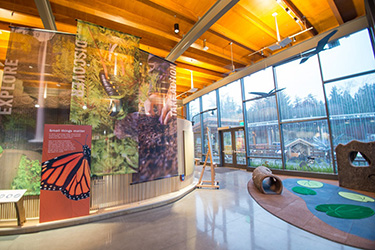|
Subscribe / Renew |
|
|
Contact Us |
|
| ► Subscribe to our Free Weekly Newsletter | |
| home | Welcome, sign in or click here to subscribe. | login |
Architecture & Engineering
| |
February 5, 2019
Oregon Zoo ed center wins design award
Oregon Zoo's Education Center earned LEED platinum certification from the U.S. Green Building Council and won an Architecture 2030 Award from AIA Portland for design excellence aimed at reducing greenhouse gas emissions.
Opsis Architecture led design for the new center, which aims to inspire young people and be a regional hub for conservation.
Heidi Rahn oversees projects funded by the 2008 zoo bond measure promoting animal welfare and sustainability. In a press release, she said the honors highlight the zoo's commitment to sustainability and its responsibility to the community.
“If we want a better future for wildlife, it's vital that we conserve natural resources and make sure our day-to-day operations and construction practices are environmentally sound,” she said.
The center expands the zoo's conservation education programs through collaborations with the U.S. Fish and Wildlife Service and other partners, and is an entry for children who participate in zoo camps and classes.
It was built by Fortis Construction. The team also included Jones & Jones Architects and Landscape Architects, Catena, KPFF Consulting Engineers, PAE Consulting Engineers, Listen Acoustics, IQ Magic, Work as Play, and Halliday Associates.
Sustainable elements include:
• Rain gardens that capture, slow down and clean stormwater before releasing it to the Willamette River. Rainfall from the roof is routed to a 10,000-gallon underground storage tank. The water is then reused for flushing toilets.
• 760 solar panels on the roof and nearby zoo train platform.
• Wood certified by the Forest Stewardship Council.
• High-efficiency LED lighting and HVAC systems that run through a digital control system, and energy-efficient radiant floor heating.
• Landscaping that includes 90 species of Willamette Valley native plants, which require less irrigation and provide food and shelter for local wildlife.
• Bird-friendly lights and fritted glass — identified with help from the American Bird Conservancy — that help prevent window strikes.
• Landscape gates and wildlife garden shelter built of salvaged wood.
• Salvaged pavers in the Wildlife Garden.



